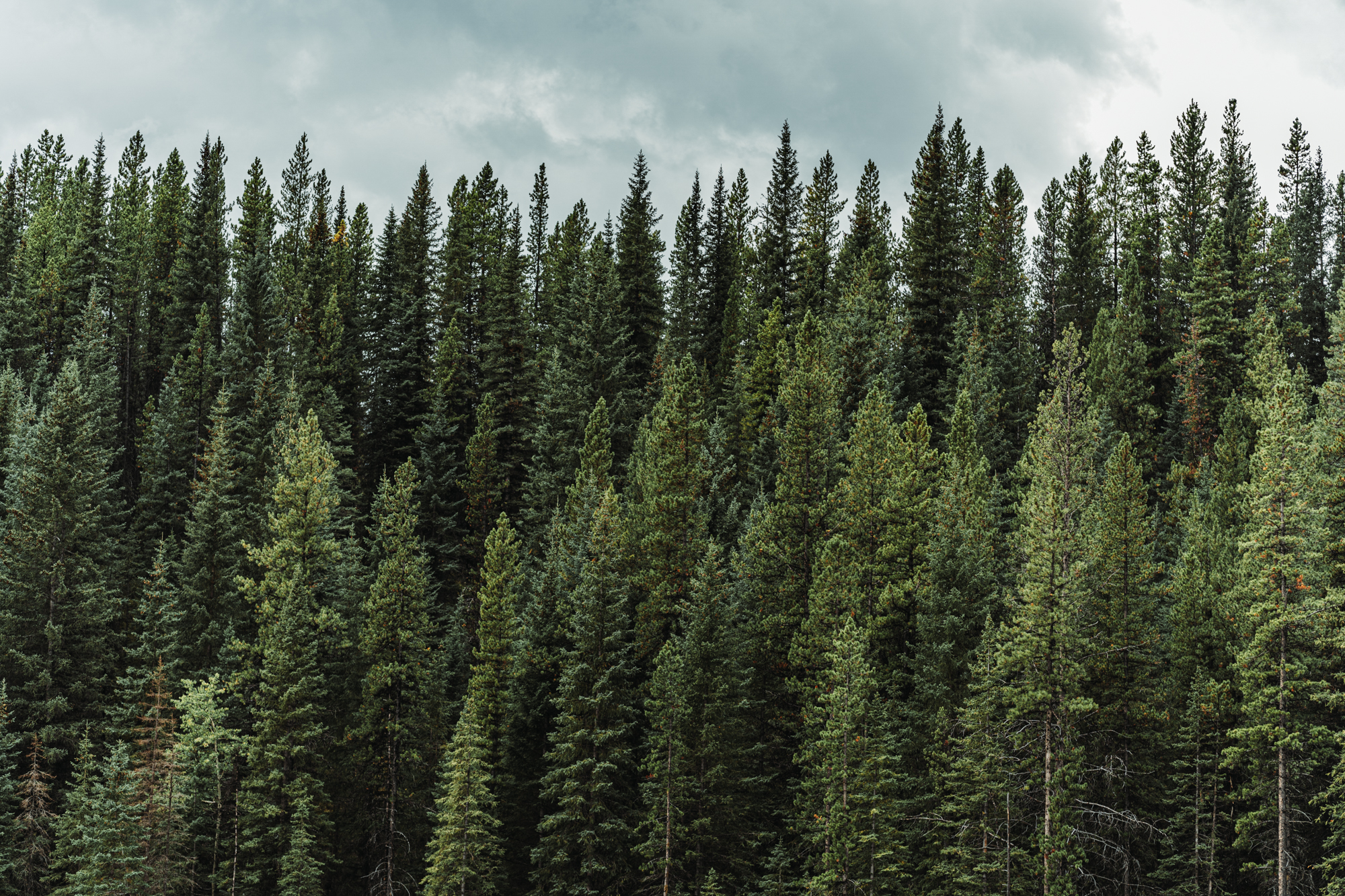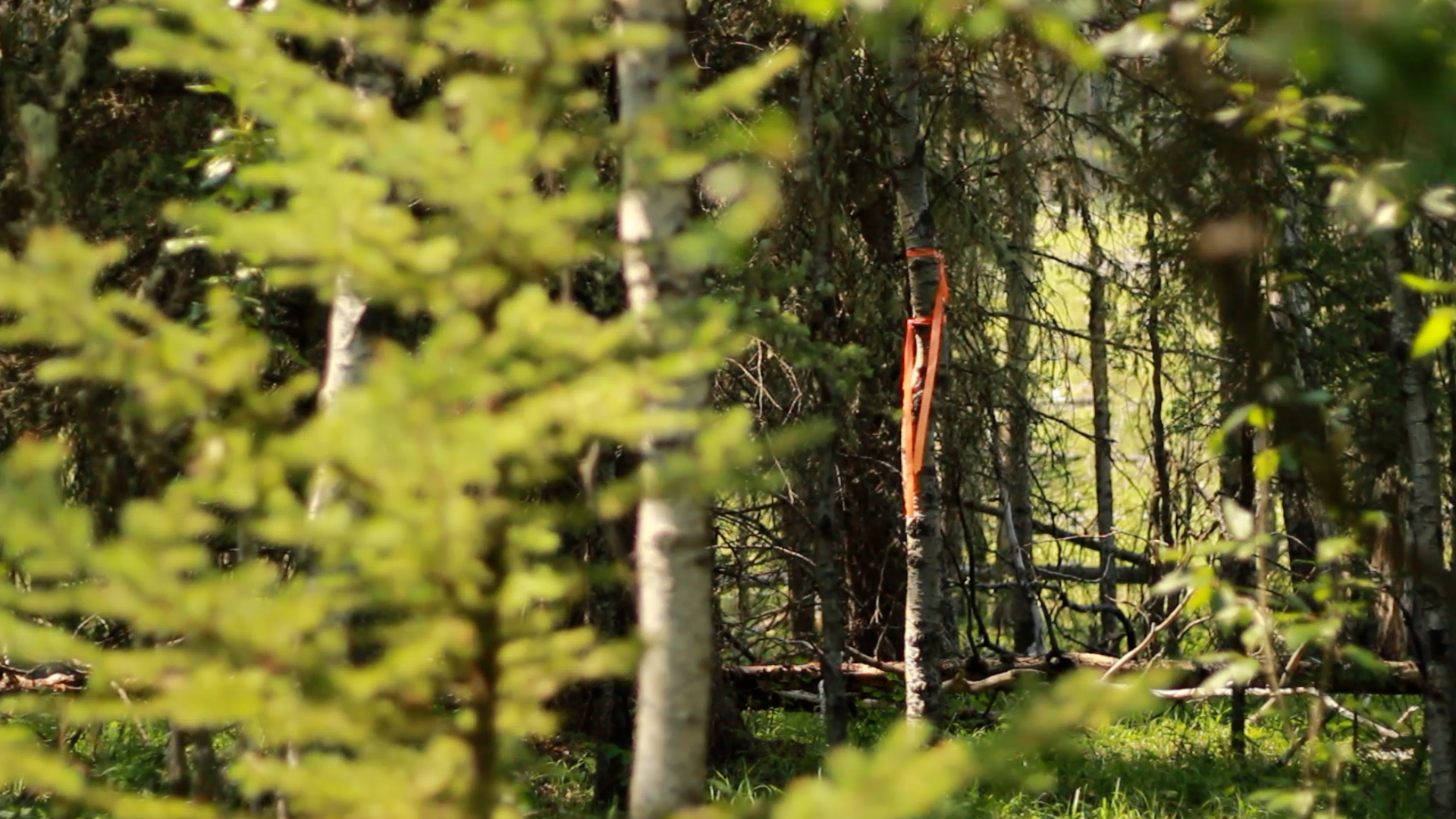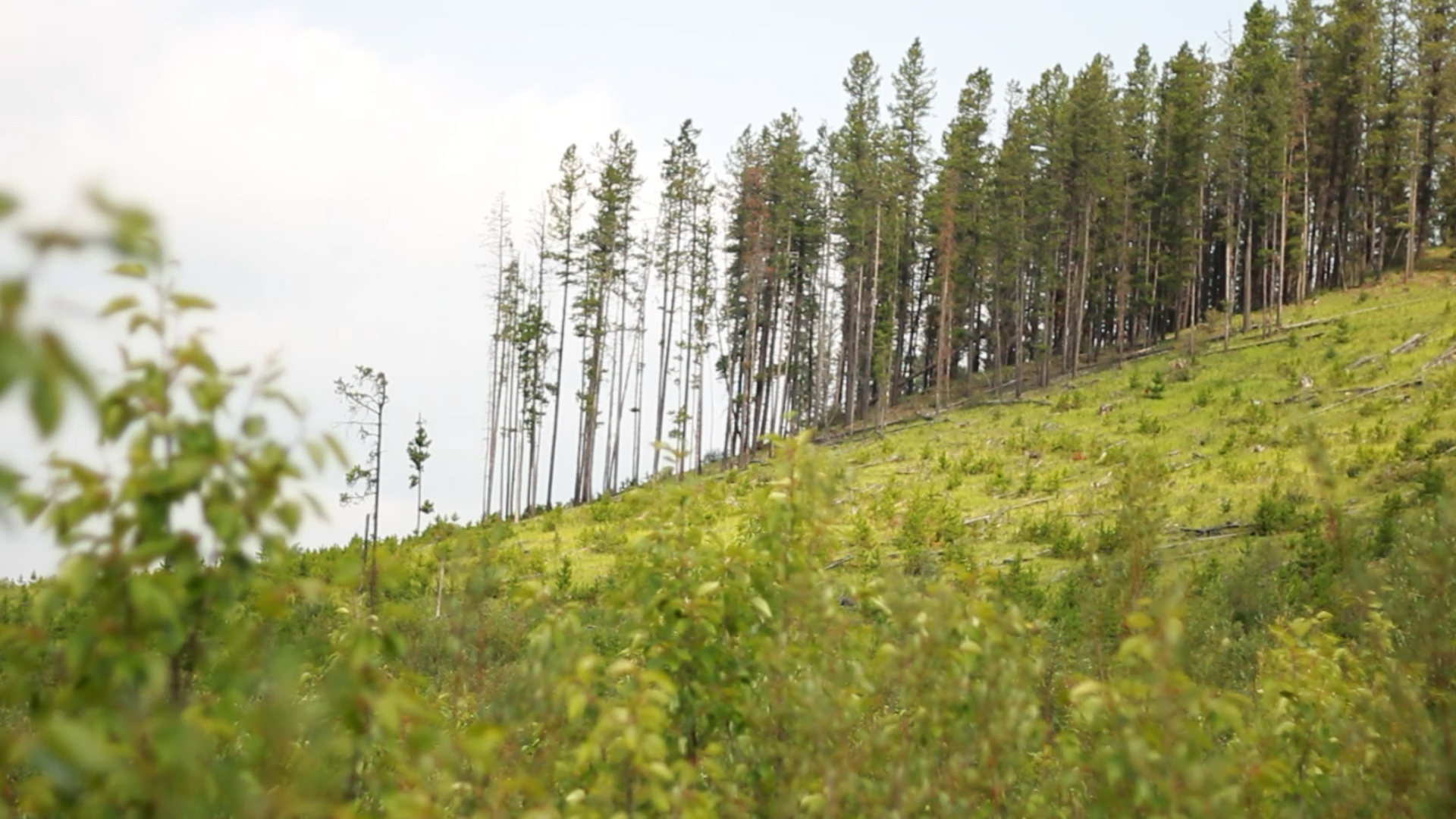
From Canopy to Currents: Exploring the Forest-Water Connection
April 26, 2024
- •
- •
- •
- Areas of Concern
- Biodiversity
- Climate Change
- Fish and Forest
- Forests
- Groundwater
- Headwaters
- Issues
- Wildlands
- Wildwater
Even when reforestation is successful, managed forests are not equal to natural forests when it comes to biodiversity, carbon storage, and watershed values

Forests stand watch over mountain streams. Photo © A. Toner
By Devon Earl
Read the PDF version here.
In much of southern Alberta, we almost made it to Christmas without a trace of snow on the ground. On top of climate anxiety, many Albertans worry the sparse snowpack this winter will mean water shortages this spring and summer. The province is under a Stage 4 drought, and many are calling on the government to declare a Stage 5 province-wide emergency. Meanwhile, provincially-approved logging plans in the Eastern Slopes headwaters were set to march forward with little to no consideration for how they might exacerbate the expected drought conditions.
The Journey of a Raindrop
Forestry is a major disturbance in Alberta’s wild lands and has well-known impacts on water quality and flow. This is because water’s journey from clouds to rivers is deeply tied to the landscape. If a raindrop falls on a forest, its path may be intercepted by the canopy. Dense foliage will obstruct water on its way to the earth, diminishing the erosive forces of the rainfall. Droplets linger on tree needles and leaves, trickling down and percolating into the earth, replenishing soil moisture. Soil that is interwoven with plant roots acts as a sponge, increasing infiltration, retention, and distribution of moisture in the soil matrix. The roots create small and large pores in the soil that facilitate water movement and storage throughout the rhizosphere — the area of soil where root activity occurs. Tiny pores in the soil store water that can be used by plants when rain is scarce, mitigating the impacts of drought on the surrounding ecosystem. The soil water nourishes the abundant life of the forest and may go on to recharge groundwater as gravity pulls it towards the low points of the landscape where rivers run and water bodies lie.
In the absence of plants, water droplets fall unhindered onto the earth. The impact of raindrops can compact the soil surface, creating a crust that impedes water penetration. This phenomenon, known as surface sealing, exacerbates runoff and erosion. As rainwater traverses the surface of the earth on its way towards a water body, it may pick up dirt, plant matter, and any pollutants it encounters along the way. This sediment is then introduced into streams and rivers and can suffocate fish and bury their habitat while reducing water quality. Surface runoff reaches its destination quickly when compared to water that is sucked into the Earth.
This is why unvegetated areas are often prone to flooding.
Forest cover also plays a role in the dynamics of snowmelt. While the forest canopy does intercept snowfall, stands of trees facilitate snow deposition along windward edges. Trees trap snow on their branches and in their forest floor depressions. The shade provided by trees reduces the warmth and sunlight reaching the snow surface, delaying snowmelt and extending the duration of snow cover as temperatures heat up in spring. As the snow melts, it can be taken up by porous forest soils, delaying the onset of peak runoff and sustaining streamflow as the soils gradually release water.
In light of climate change, we expect much more frequent and severe floods and droughts, and there is a need to plan ahead to ensure that our landscapes are resilient to these changes. This means protecting forests in headwaters such as in Alberta’s Eastern Slopes, which supply critical drinking water to Albertans and Canadians in the prairie provinces.
Logging our Watersheds
Although the Alberta government promises that only a small portion of Alberta’s forests are logged annually, the majority of Alberta’s forests are under Forest Management Agreements (FMA’s), which give companies the right to log forests in vast areas for 20 years at a time and are typically renewed after that. Harvested areas are reforested after logging, but even when reforestation is successful, managed forests are not equal to natural forests when it comes to biodiversity, carbon storage, and watershed values. Despite this, logged areas are not considered “deforested,” and so high-value forests continue to be logged and degraded while Canada boasts low deforestation rates.

Trees are marked where a logging project in the Ghost Watershed is set to take place. Photo © A. Tucker
Some of these high-value forests are the sentinels of our watersheds. If you haven’t caught wind of the controversial logging plans for the Upper Highwood in Kananaskis, let me bring you up to speed. West Fraser Cochrane (formerly Spray Lake Sawmills) plans to log 1,100 hectares of mature forests in the lands surrounding Loomis Creek and the Highwood River over two years beginning in winter 2023 (as of February 2024, West Fraser has announced a one-year pause on this logging plan). Since these plans hit the headlines, they have been very unpopular with Albertans, who are frustrated that forests in Kananaskis are to be clearcut even though they pay a $90 annual fee for “conservation” of the area.
The area makes up important habitat for bull trout, Alberta’s provincial fish and a threatened species. Unfortunately for the public and the trout, the logging company has the green light to cut these forests down thanks to their Forest Management Plan rubber-stamped by the provincial government in 2021. The Upper Highwood is included in the Spray Lake Sawmills FMA. When the provincial government enters an FMA with a forestry company, there is no public consultation on the matter. Albertans never got a say in whether the Upper Highwood forests should be included in this FMA, even though these forests are a public resource on public lands. The Upper Highwood is just one example of countless unsustainable logging plans in the Eastern Slopes — it is a province-wide issue that stems from inadequate laws and policies governing forestry.
‘Sustainable’ Forestry
The provincial government and forestry industry assure us that their operations are 100 percent sustainable, although there is no evidence for this (native trout, caribou, and old forest birds all tell a different story). Alberta’s forests are managed on a sustained timber-yield basis, meaning that the aim is to maintain the same amount of timber yield over time by reforesting harvested areas. Forest harvesting and operating ground rules (OGRs) add mitigation tactics that allege to lessen harm to the environment where logging occurs. The provincial OGRs set out restrictions such as how much buffer must be left between a water body and a forestry cutblock, and the planning phase requires a rudimentary watershed assessment. These measures fall far short of their goals of protecting water and fish.
The Spray Lake Sawmills 2021 Forest Management Plan (FMP) indicates that an Equivalent Clearcut Area (ECA) analysis is done to assess watershed risk from logging. In a nutshell, ECA refers to the percent of a watershed that is disturbed by logging, accounting for forest regrowth.
The management plan states that the ECA target over 200 years of harvesting is to be below a 30 percent threshold in each unit. Despite this, the ECA in one sub-watershed of the Upper Highwood will reach 46 percent if the planned Upper Highwood logging goes ahead. In a webinar hosted by CPAWS Southern Alberta Chapter, UBC forest hydrologist Dr. Younes Alila explains that the research that underlies ECA was conducted at the scale of small stream water catchments, and its ability to predict the magnitude and severity of floods falls apart at larger scales and when considering larger precipitation events – the scales that are relevant to people. The larger the scale we are looking at, the larger the effect of logging is on flood severity and frequency. This has been reported in the scientific literature, but that knowledge has not been incorporated into forest management planning. This is one example of how current forestry regulations do not reflect the best available science when it comes to protecting water.
Who is Responsible for Protecting Water?
In Alberta’s Eastern Slopes policy (published in 1977 and revised in 1984), the first goal that is stated for management of the Eastern Slopes region is “To ensure a continuous, reliable supply of clean water to meet the needs of Albertans and interprovincial users now and in the future.” The policy also states that “The highest priority in the overall management of the Eastern Slopes is placed on watershed management,” and acknowledges the area as “the critical headwaters region for the prairie provinces.” We now know that the way forestry is managed is not maintaining watershed integrity as the highest priority. Rather, timber interests frequently take precedence over water, and whatever mitigations exist to protect water and fish fall short (see Lorne Fitch’s article in the Winter 2023 issue of the Wild Lands Advocate to learn how logging and flooding have negatively impacted bull trout in Hidden Creek).
Alberta is long overdue for almost all land-use plans under the Alberta Land-use Framework, which is intended to address cumulative effects of all activities on the land and set a long-term vision for each region that protects environmental, economic, and social values into the future.
The boundaries of each region are based on major watersheds, which inherently reflect watershed integrity being the key intent of land-use planning. The South Saskatchewan Regional Plan (SSRP) is one out of seven regional plans that has been completed province-wide and is the management framework replacing the Eastern Slopes policy within the South Saskatchewan region. Like the Eastern Slopes policy, the SSRP also recognizes watershed integrity as the highest priority for management in the Eastern Slopes, and mentions forestry as an approved activity in 48 percent of forested areas in the region. However, the SSRP is a high-level plan, and specific details and thresholds to sustainable development are not addressed but are to be set out in various sub-regional plans.

Logging activity over several years has affected the Horse Lake area within the Ghost Watershed. Photo © A. Tucker
To date, the only completed sub-regional plan under the SSRP is the Livingstone-Porcupine Hills plan. The SSRP’s objective relating to forestry is that “the region’s forestry industry is maintained and diversified,” while promising that forest management plans in the region will be adjusted to align with the Alberta Forest Strategy. The mystical Alberta Forest Strategy was allegedly under development at the time of publication of the SSRP, but to our knowledge was never completed or released. The SSRP reaches its 10-year anniversary this year, and thus is due for review.
While most issues on water and forestry are under provincial jurisdiction, Fisheries and Oceans Canada (commonly known as DFO) is responsible for protecting federally-listed aquatic species at risk, which includes endangered native trout that live in the Eastern Slopes. It is important to protect species at risk not only to keep them on the landscape, but also because they are indicators of the health of the ecosystems which they inhabit. Healthy populations of native trout rely on healthy, intact forests and a healthy landscape. To protect them, we must protect the forests that influence the water.
DFO fails to do this by permitting industry to damage critical habitat and failing to enforce their own rules. In the case of the Upper Highwood logging, Spray Lake Sawmills built a bridge over the Highwood River (a federally-listed critical habitat for bull trout) without applying for a permit from DFO. DFO was informed of this by concerned groups and individuals, and has said that they’ve opened up an investigation into the issue. We are not aware of any fines or enforcement actions that have been taken that would deter forestry companies from breaking the rules in the future to the detriment of fish and water.
Concluding Thoughts
The intricate relationship between forests and water is fundamental to our ecosystem’s health, particularly in regions like southern Alberta facing increasing climate variability. The current trajectory of forestry in Alberta’s headwaters raises serious concerns about the sustainability of our water resources. Ongoing logging plans in the Eastern Slopes are a stark example of how short-term gains can jeopardize water security.
It is foolhardy to allow resource extraction at a level that threatens such a vital need as water. It is akin to saying that short-term industry profits are more valuable that the oxygen that keeps us alive. If we shift our focus back to what is most important, we can support a resilient economy and create forest products in a way that doesn’t threaten our fundamental needs of water and a healthy environment.